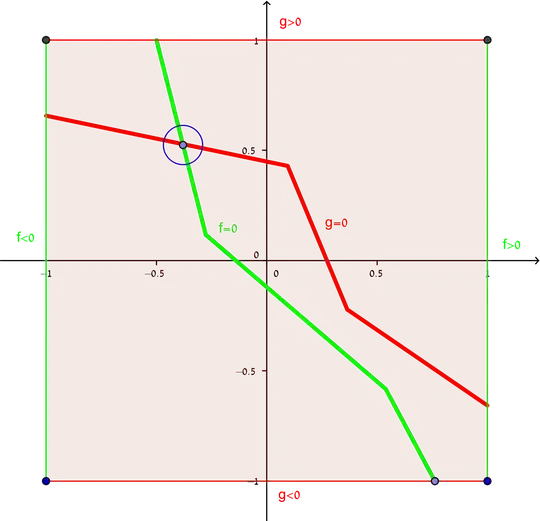Given 1 continuous function $f(x)$ defined on a 1-dimensional interval $[-1,1]$, the IVT says that if:
- $f(-1)<0$ and
- $f(1)>0$
then there is an $x$ such that $f(x)=0$.
I am trying to prove the following extension:
Given 2 continuous functions $f(x,y)$ and $g(x,y)$ defined on a 2-dimensional square $[-1,1]\times[-1,1]$, if:
- for all $y$: $f(-1,y)<0$ and $f(1,y)>0$
- for all $x$: $g(x,-1)<0$ and $g(x,1)>0$
then there are $x,y$ such that $f(x,y)=g(x,y)=0$.
My current "proof" is graphic:

I.e., by the condition on $f$ (green), there must be a connected "wall" (green), separating the west side from the east side, in which $f=0$. Otherwise we could go from $f<0$ to $f>0$ without passing through $f=0$, which is impossible.
Similarly, by the condition on $g$ (red), there must be a connected "wall" separating the north side from the south side, in which $g=0$.
These walls must have an intersection point in which both functions are 0.
MY QUESTIONS ARE:
- Is this idea correct?
- If it is correct, how can it be formalized?
- Are there generalizations of this theorem to many dimensions?